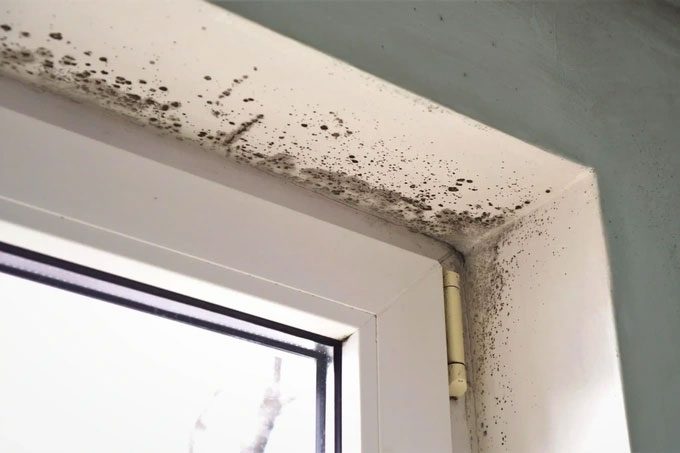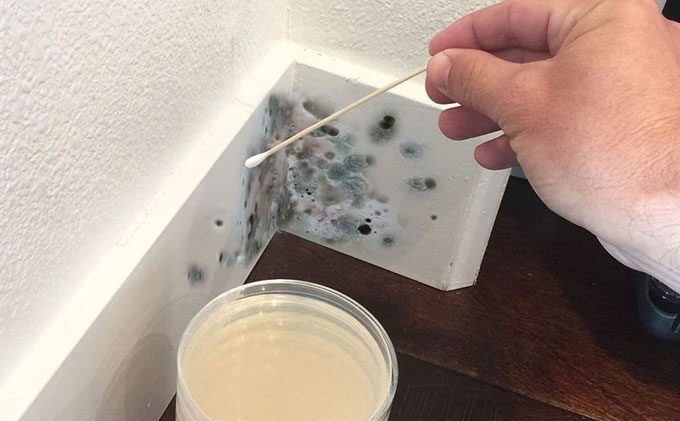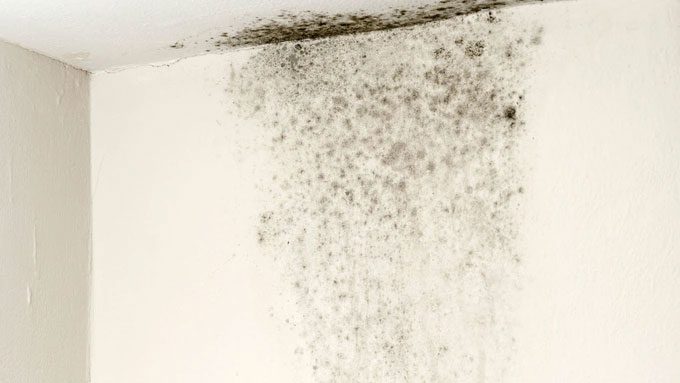Mold is a crucial concern for everyone, especially during prolonged humid weather, as it can lead to cancer.
The Northern region, especially Hanoi, is currently experiencing a prolonged humid spell, with high humidity levels, accompanied by drizzling rain and fog. According to the National Center for Hydro-Meteorological Forecasting, this weather pattern may persist until the end of April this year.
In addition to the daily inconveniences caused by drizzle making movement difficult, traffic congestion, and increased accident risks due to fog, the humid weather also negatively impacts health in ways that can be hard to predict.
Where Does Mold Come From, and What Are Its Effects?
Mold is classified by the World Health Organization (WHO) as one of the top carcinogens, being 68 times more toxic than arsenic.
Mold typically thrives in damp, warm environments, primarily around showers, dishwashers, washing machines, in kitchens, or any area with high moisture conditions.
However, in spring, when humidity levels rise significantly and humid conditions are nearly everywhere, mold becomes even more dangerous and should be detected early before it proliferates excessively.

Mold is a dangerous enemy to human health that needs early detection and treatment. (Photo: IAQ).
Mold reproduces by dividing itself, creating spores that spread into the air. This is also a primary component of dust in homes and workplaces.
Numerous scientific studies indicate that when humans are continuously exposed to moldy environments for extended periods, it can be very harmful to health, increasing the risk of cancer and even causing death.
Individuals at high risk for health issues due to mold include children, the elderly, and those with weakened immune systems. People suffering from certain diseases like cystic fibrosis or chronic pneumonia may experience immune system infections if they inhale specific types of mold.
When inhaling mold, the body reacts similarly to inhaling dust or pollen. Large quantities of mold spores can lead to health problems such as allergies and respiratory illnesses, with symptoms including sneezing, itchy eyes, headaches, fatigue, joint pain, hives, coughing, asthma, and nausea.
Some types of mold also produce mycotoxins—substances that can seriously affect the health of humans and animals. Exposure to high concentrations of mycotoxins can lead to neurological issues and even death.
Where Does Mold Typically Hide?

Mold is most commonly found in corners, tile joints, bathroom curtains, kitchens, inside cabinets, and trash bins… (Photo: DIY Mold Test).
Mold can thrive in both high-temperature and humid environments. Therefore, bathrooms are particularly susceptible to mold infestation. It can appear in corners, tile joints, and bathroom curtains.
In addition to bathrooms, kitchens are frequently sites for mold, especially in sinks, trash bins, or inside kitchen cabinets and shelves.
Moreover, refrigerator door seals are also a favorite spot for mold. A survey by the University of Arizona found that the probability of detecting mold in refrigerator door seals is 83%. Each time the refrigerator door is opened, the mold’s growth area expands.
How to Prevent Mold?
To prevent mold, readers might consider using waterproof paint, which helps limit mold growth on walls.
Additionally, it is crucial to regularly clean your home, especially areas prone to water accumulation, as these are ideal conditions for bacteria and mold to thrive.
Furthermore, to combat humid weather leading to mold growth, you can use air purifiers, dehumidifiers, air conditioners, or even heaters.

Mold thrives easily in prolonged humid conditions. (Photo: Getty).
However, it is essential to note that the humid phenomenon can worsen if not addressed correctly.
One common mistake many people make is turning on fans in hopes of drying the water droplets in the air or on the floor. However, even with the doors closed, this method is entirely ineffective.
The reason is that the cool air from the fan does not blow away the moisture; instead, it makes the air more humid due to increased condensation, leading to even more water accumulation and facilitating mold growth.
Many people also find the floor dirty and wet, then actively mop it. However, this actually contributes to making the floor wetter and prolongs the drying process.
This is because when mopping, we inadvertently add more moisture, increasing the existing humidity. At this point, it is more effective to use a dry cloth to wipe up water in areas where it accumulates.


















































